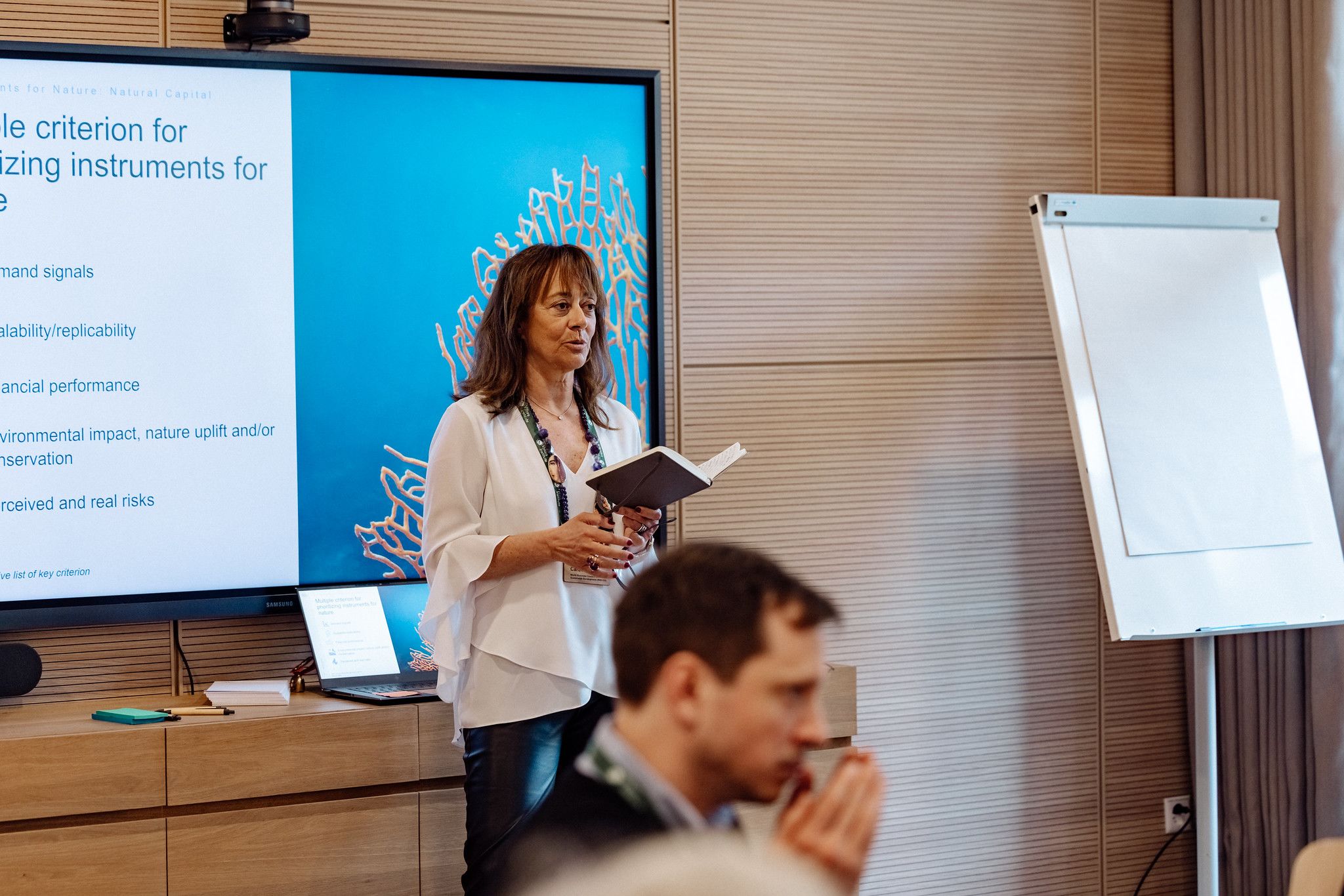Ideas from the Speakers
Natural capital is the stock of the world’s natural resources. It underpins all socioeconomic activities, and investing in it is essential, feasible, and attractive. So, why is there a lack of investment in natural capital? Can the right financial instruments garner more capital? Are they replicable and scalable? Is there demand for these instruments, and can investors expect significant financial returns? These questions were posed to the experts working at the intersection of natural capital and finance.
A speaker detailed their experience derisking natural investments for corporate firms. They built a scientific advisory board to scrutinize nature-based investments by investigating carbon, biodiversity, and reliability. Only 8% of the assessed projects were deemed “of trust,” identifying a critical problem in the carbon/biodiversity credit market. Another speaker summarized client concerns. Mainly, demand for “natural climate solution credits” is exceedingly low, so companies see little value in purchasing credits, which reduces investor interest. In addition, the finance gap of nearly $7 trillion invested globally each year directly harms nature. Cooperation between corporations and financial actors is needed to reduce harmful investments and spur demand to close the gap.
One speaker advocated a bespoke approach, given the diverse perspectives on impact, and emphasized the extensive financial instruments available to private equity funds. The expert highlighted Apple’s partnership with Conservation International to conduct nature-based CO2 removal. The rhetorical question becomes: how can we develop capital-efficient strategies to hedge carbon in the future to transform industries? Leveraging existing opportunities like carbon credits and Indigenous rights grievance mechanisms are some options. Another speaker stressed the need to offer scalable investment solutions to establish a real asset business. Beyond being a good financial opportunity, corporates want to procure high-impact assets, but is there a conflict between impact and return? The response was that if transition strategies from carbon-intensive to low-carbon investments occur gradually over 15 years, returns will improve.
The experts remarked that no consensus exists on biodiversity credits and adequate measurement mechanisms are lacking. However, in the European Union, there is private-sector demand owing to frameworks that track improvements in biodiversity, an indication of biodiversity credits’ viability. Alongside these credits, externality taxes are viewed as a good match as they complement the credit system effectively.
Insights from the Audience
Each of the breakout session’s groups examined one financial instrument they believed to be the highest priority and explained the factors preventing this instrument from expanding. Individuals from diverse fields tended to advocate for instruments pertaining to their line of work.
While participants support biodiversity credits, they are frustrated by the UK government’s failure to integrate its biodiversity net gain scheme into other climate measures and by the schemes’ contradicting incentives. Another remark was that scale issues would persist unless demand increases, though it was noted that the potential impact is undeniable. Another proposal was that insurance companies invest in nature as risk management. One group could not reach a consensus, revealing the struggle at times to value nature or approach conservation in the same way. Concern was raised about the instrument; unless it is carefully managed, it could harm developing nations. Moreover, supporters of debt-for-nature programs must ensure that the benefits outweigh the financing costs. It was noted that bespoke nature-based solutions can focus on niche issues. Regarding the payment for ecosystem services instrument, questions were raised about how these projects begin, how they are financed, and how carbon credits might be incorporated. Debt swap instrument; unless it is carefully managed, it could harm developing nations.
Ultimately, biodiversity credits received the most support during the breakout session, but debt-for-nature swaps, payment for ecosystem externalities, and bespoke nature-based solutions all tied for second. This reflects both the diverse opinions on how to move forward and the fact that many groups proposed multiple instruments—despite going against the “rules”—indicating the importance of a multi-tool approach. One group suggested that each instrument be limited in its scalability, and that successful implementation depends on the specific location. Many instruments associated with natural capital are interconnected and conjoining them and adding components to ensure they scale will be crucial.




